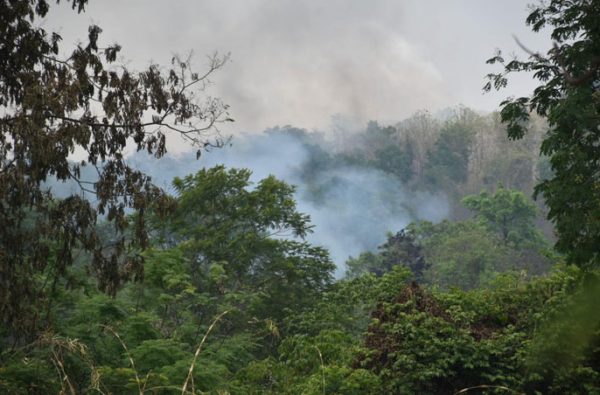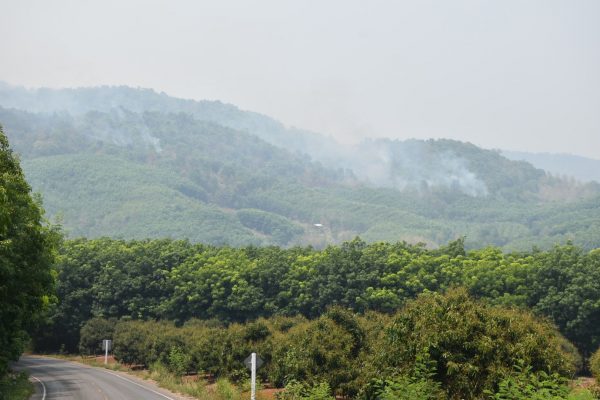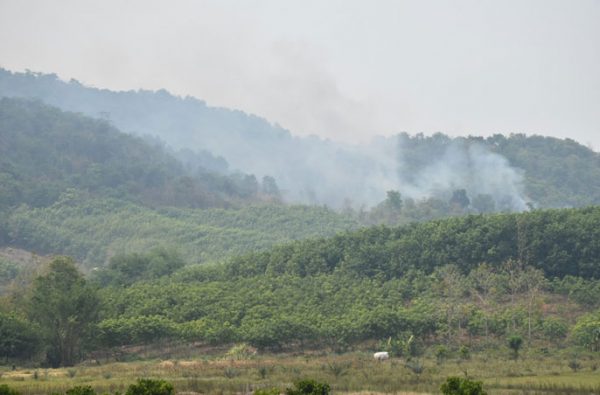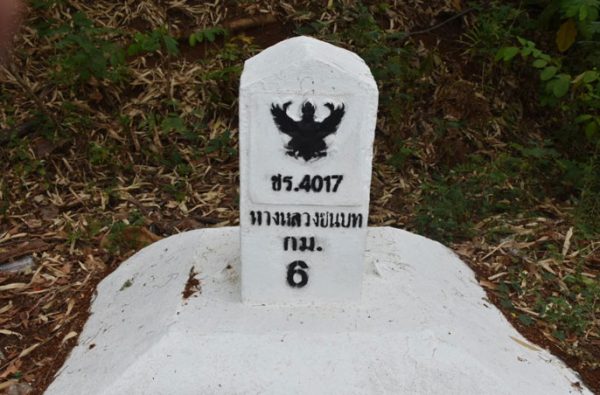CHIANG RAI, 7 May 2019: Two months into a smog crisis that first made headlines 1 March, there are still no signs that Thailand’s far north province will inhale clean air any time soon.
Inflicting immeasurable damage on the health of residents and incalculable losses on the economy and tourism, the smog clings to the hilly landscape making a mockery of government assurances that it has the crisis under control.
Provincial and district officials appear to be preoccupied with the task of deciding a date when residents can resume the burning of household rubbish in their gardens. The dates have changed at least three times in the last week when common sense would have dictated the province should put the lid on wholesale burning whatever the reason.

Chiang Rai stands out on the Thailand map for all the wrong reasons. It’s a hot spot for forest fires and agricultural arson raising the air quality index into the red alert zone for almost three months.
A screenshot of the air quality index courtesy of Air Visual for 19 March to 17 April shows the damage done over 30 days, while another for the 30 days up to 4 May shows Chiang Rai remains the most polluted spot to visit in Thailand.
What a tragic downfall from being pitched just a few months ago as an up-coming leisure destination destined to attract high spend incentive groups and leisure travellers keen to explore a cultural experience that is fast disappearing in urban cities around Thailand. The crystal ceiling has caved in on that narrative.

Take a look at the Air Visual map for Thailand and neighbouring countries and see the red and deep burgundy spots that signify North Thailand is suffering an unprecedented health crisis that will rip apart the region’s economic well being for years to come. Properties will lose their value, hotels will have to contend with deep red zones in the balance sheets while public health costs will skyrocket.

Chiang Rai located at the far north of the map is a cul-de-sac of dense smog with visibility down to 3 km cloaking the province’s dramatic landscapes of forested hills.
But the negative alerts on the map are also flagging other northern destinations. There are red and orange spots over Chiang Mai around 123 AQI, Mae Hong Son in the west (152 AQI) and to the west in Nan province (117).
In one sweep the tourism industry of six northern provinces is in jeopardy.
Following in the wake of thousands of hot spots and fires deliberately started by agricultural arsonists the blame game plays out. In Laos, the Vientiane Times last week blamed the increase in smog pollution in the Lao capital on neighbouring Thailand and Myanmar. No prizes on where we placed the blame although Laos has a network of green coloured air quality monitors lined up to counter any criticism.
In stark contrast with Thailand, all the dots on the Laos air quality map show a country clocked in healthy air. Luang Prabang just 400 km due east of Chiang Rai is a happy 79 AQ1 and Vientiane 61 despite the Vientiane Times’ complaints.
More often than not the neighbouring air quality monitoring spots in Laos sparkle in green and yellow while just across the border we live in the twilight zones of menacing reds and burgundy?
Myanmar has the best clean air story of all our neighbours. Not a single air monitor shows up on Air Visual until you scroll the map south to Yangon and discover a red AQI dot of 150. Officially, the rest of Myanmar is beyond the curtain of smog completely free of negative counts and colour codes. It’s as if air quality monitoring just doesn’t exist in the Myanmar equation.

Homegrown crisis: Forest fires burning in the hills near Chiang Rai 5 May. KM marker identifies the location.
So for all the wrong reasons North Thailand stands out as a smoggy hot spot and for that and nothing else the advisory for would-be travellers is quite simple.
“Don’t waste your holiday savings visiting North Thailand until you see a consistent line up of green columns on the AQI chart day-after-day. Capture the 30-day screenshots of the Air Visual AQI map and you will quickly identify where the blue dots are located that indicate very healthy spots. – They are all shining bright in the far south at beach resorts on the Gulf of Thailand and the Andaman coast.”
If it is any consolation, Chiang Rai is right up there with famous smog spots such as Beijing, Kathmandu in Nepal Incheon in South Korea, Dubai and Jakarta in Indonesia all dirty and dangerous spots to hang out according to AQI charts.
Ironically on 3 May, one of the air quality measuring apps (acicn.org) gave the Chiang Rai hospital, located in the heart of town, a reading of 444 AQI declaring the location “Hazardous”, hardly a fitting description for a medical outpost dispensing care for the frail and ailing.
Why the burning must end
YouTube video on impact of fires on health, tourism and the economy

Chiang Rai smog levels 19 March to 17 April. Plenty of unhealthy purple with a spike of hazardous burgundy.

Chiang Rai smog levels 5 April to 4 May still predominantly red with slivers of very unhealthy purple.
(Source: Air Visual)







Thanks, Don, for this great article. It is a tragedy.